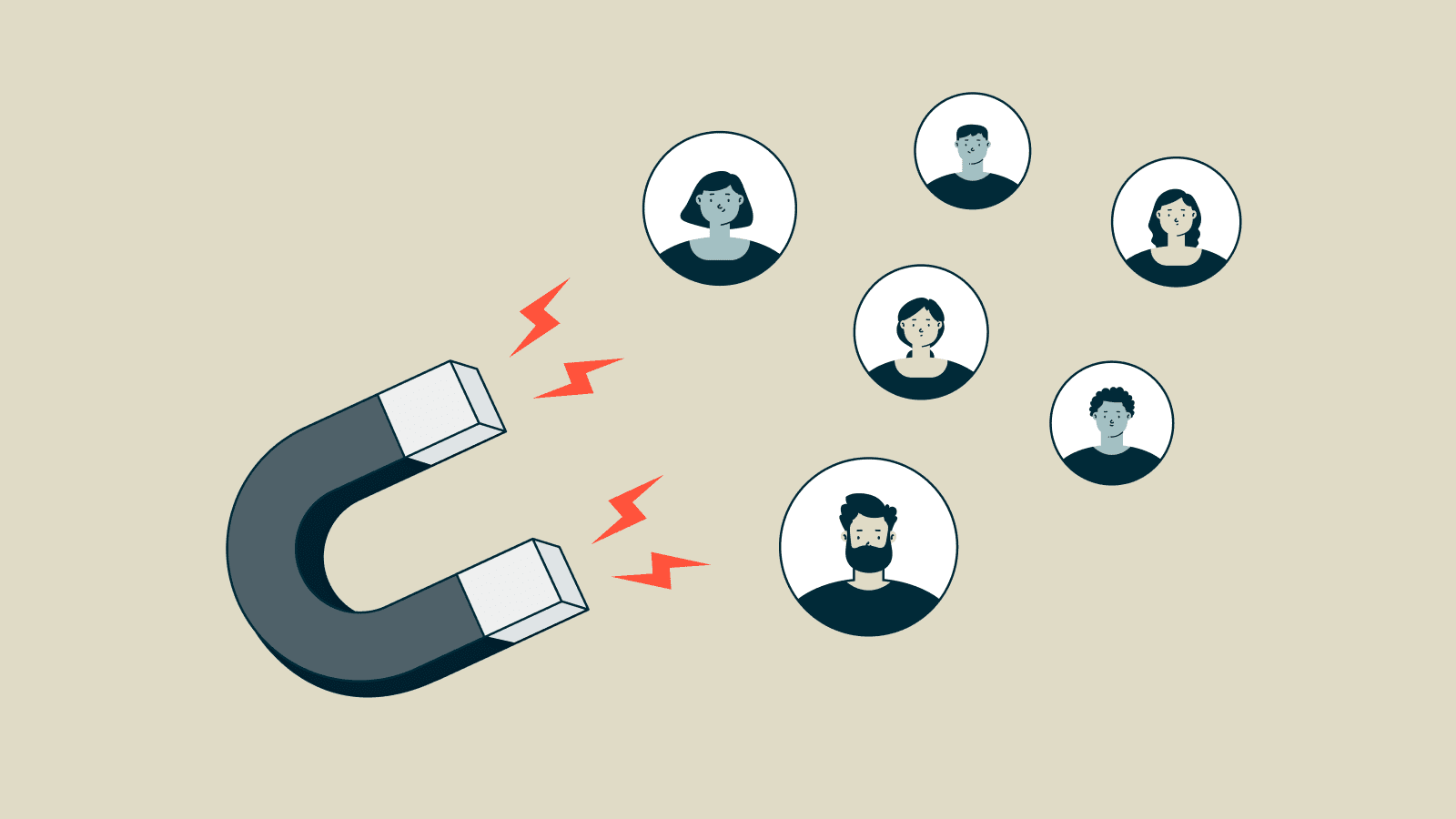As the focus in SaaS moves from ‘solely growth’ to ‘growth and profitability,’ customer retention finds its long-due moment under the sun. In a world where acquisition costs and resistance to new sales are likely growing, ensuring your existing customer base can continue to grow with you is critical for your organization’s growth.
For starters, a better retention rate can also improve revenue by lifting your average customer lifetime value (LTV). According to Bain & Co., businesses that increase their retention rates by 5% have seen an increase in profits by 25-95%.
While 5% may sound like little, the effort to attain it can be substantial.
Customer retention is not something that can be impulsively deployed. Your customer retention strategy should focus on specific vertices to improve your overall customer experience, time-to-value, and customer support. We explore all this and more in this post.
Before diving into the various ways customer retention strategies can benefit your company, let’s first discuss what customer retention really means and the negative effects of customer churn. After exploring the different benefits of customer retention, we’ll discuss some of the ways you can keep customers happy.
What is customer retention?
As the name suggests, it refers to the ability to keep customers or the actual rate at which customers remain patrons of your business. Customer retention does not only offer repeat business opportunities, but also the ability to create long-term relationships – further building advocacy and brand champions who will help extend your reach. Sustained positive experiences, through optimizations based on customer feedback, and building customer loyalty programs are just some of the ways you can make your customers feel more valued and appreciated.
What can affect customer retention efforts?
When it comes to customer churn the biggest driver for many customers is the lack of value delivery. If a customer has concerns or vents their frustrations and receive no support, they cease to see you as a solution, and your relationship boils down to being a transaction.
Credit card provider American Express saw in a study that 33% of customers will think about switching companies after just one poor customer support experience. Remedying this type of sentiment should always be a core goal for any customer retention strategy. Other common factors that contribute to drops in customer retention can include issues in customer service or experience, pricing, product quality, and even their own lifestyle changes.
Get more insights as to what drives customers to leave organizations and see how to combat churn with the help of our Retention for eCommerce Subscriptions: The Ultimate Cheat Sheet.
Beyond resulting in customer churn, these factors can also damage your brand reputation, harm your bottom line, and scare away future prospects.
What are the benefits of customer retention?
There are a lot of ways focusing on your customer retention efforts can benefit your organization. In the end, the goal of customer retention is to keep them happy so they can play a key role as your organization grows.
1. Increased Revenue
Successful customer retention offers extended relationships with your customers, and hence, extends your recurring revenue margins. Since your existing customers are familiar with you and likely trust your business, convincing them to stay on is often easier (and cheaper) than exhibiting value to a net new customer.
Furthermore, newer customers are usually in an experimental phase in the early-days of their relationship with you. It can therefore be harder to gauge their intent to stick around, or continue post their initial purchase. Returning customers, on the other hand, are more likely to extend their relationship provided that you continue to generate value for them, significantly increasing revenue over time.
2. Lower Marketing and Customer Acquisition Costs
When you consider the costs associated with retaining customers versus acquiring them, the budget for existing customers will be much less. Attracting new customers can be expensive, involving investing in advertising, offering incentives, and other marketing strategies. Acquiring new customers can cost five times more than retaining an existing customer. We already mentioned how minimal retention increases could substantially improve your profits. What’s more – an existing customer is 60-70% more likely to purchase a new product, while the success of selling to a new customer is only 5-20%.
The bottom line is that focusing on retention offers any organization savings beyond recurring relationships. It provides better returns than expending your acquisition cost for every net new customer.
3. Increased Customer Lifetime Value
As the name suggests, customer lifetime value is a metric that estimates the revenue generated by an average customer across their entire journey/engagement with a business. Retaining more customers and upselling or cross-selling add-ons or packages to them are the primary drivers of lifetime value.
By successfully retaining customers, you also increase your opportunities to build trust and upsell additional or affiliate products and services to them, thereby building additional depth to your average LTV. While net new revenue is an important goal, retained revenue is a better indicator of your sustainability.
A negative impact on customer lifetime value could indicate an issue with customer experience, product quality, or pricing and is a symptom of churn or downgrades. Having the proper infrastructure on an analytics platform can make it simple to address issues and lift your LTV back up quickly.
4. Enhanced Brand Reputation
Consider how customers will refer friends and family to products or services they’ve had a positive experience with. A long, healthy customer lifetime value can be reflected not only through their repeat purchases but also can result in organic brand advocates and larger orders. When you focus on customer retention, you’re able to enhance your brand’s reputation, extending beyond your normal customer base.
A positive brand reputation will draw more potential customers to explore your offerings and can position you as a trusted and reliable organization.
5. Elevated Sales Forecasting
A solid, reliable customer base means your ability to forecast your sales and projected revenue improves accurately. Without worrying about mitigating high customer churn, you can focus on more strategic initiatives based on the stable insights you garner from a successful retention strategy. Less time wondering why customers may be leaving means there’s more time and energy to focus on other mission-critical aspects, such as scaling the business or exploring ways to reduce customer acquisition costs.
6. Increased Competitive Advantage
Another added benefit of focusing on your customer retention and building a strong, loyal customer base is a competitive advantage. Optimizing or higher customer retention means first understanding and intercepting customer wants and needs. For that to happen, brands must continually seek and capture customer feedback, both during purchase and at the point of cancellation.
This foundational knowledge gives them more impetus to build with a focus towards a definite problem for their customers. With the help of long-form cancellation feedback powered by Chargebee Retention, businesses like the mobility platform – pliability also found product-level optimizations that kept their customers from realizing their true potential with the business. By collecting and acting on customer feedback, they were able to present a better product to the market and build a cult of loyal customers.
With a strong customer retention strategy, you can improve your competitive edge and gain more footing within your industry. This is beyond the obvious financial benefits of having a predictable and strong recurring revenue base.
7. Greater Customer Feedback
While sharing good experiences online is rare, negative customer feedback can be plentiful. Many try to avoid these reviews or refuse to acknowledge them because they are afraid of the ramifications to their brand. Doing nothing is, in fact, worse. It can make a customer feel like they aren’t valued and reduces the amount of trust they have for the brand.
When you take the opportunity to respond back to the honest and constructive feedback your loyal customers are leaving, you are strengthening the connection between the brand and customer. To go a step further, actually implementing changes to address these issues can help you meet expectations better and improve your customer experience.
8. Improved Customer Experience
The insights received through customer feedback can provide a roadmap for areas you should focus on improving, whether that is the product itself or the overall buying process.
By shifting the focus to customer retention, you are essentially exploring opportunities to also improve your customer experience. Doing so can help you identify opportunities for service or product updates to improve the overall quality to maintain customer satisfaction. This time can also be used to improve the overall buying experience, making it easier for your customers to complete their purchases.
Making the sales process easier has benefits to both the customer and the organization itself.
9. Enhanced Customer Referral & Incentive Programs
Whether you create an incentive to prompt your customers to buy more or want to share their positive experience, organic referral programs are a great opportunity to acquire new customers. As we mentioned before, retaining a customer long enough can result in organic brand advocates that want to share their experience with loved ones. Incentives is another way to motivate them to spread the word.
While incentives and referrals work well for customer acquisition, the former can also be used in a dire situation where a customer is at risk of churning. By using personalized discounts and offers during a cancellation event, you can begin to mend the customer relationship and gain another opportunity to show how they are valued by the company. Restoring their confidence in the company not only retains them but also gives them the opportunity to spend more with your brand to apply the incentive. In turn, this can help improve overall revenue.
10. Improved Customer Loyalty
Customer loyalty can be considered the summation of other aspects mentioned here, like customer experience, brand loyalty and more, but it extends beyond those areas. Customer loyalty encapsulates the level of commitment and recurring business you can expect from an individual. It can also be a metric of how likely they are to continue buying from the brand.
Loyalty is a result of positive experiences, so ultimately, it is the primary focus for all customer retention efforts. Studies have shown that loyal customers are five times as likely to repurchase or to forgive a negative experience, four times as like to refer others, and seven times as likely to try a new offering.
A loyal customer base is a validation that you are doing what is necessary to demonstrate to customers how much you value their patronage.
Let Chargebee Help
High customer churn can be a big indicator that your organization needs to identify where they are falling short with customer experience and satisfaction. Because of this, it is imperative that you have a retention partner that understands and solve issues specific to your business.
As a complete revenue growth management suite, Chargebee has supported businesses – both B2B and D2C – across market segments to improve both their subscription and revenue management potential and build magnetizing retention strategies.
Chargebee’s retention product also offers the functionality to segment customers based on their product-usage data, create personalized cancellation flows, build workflow triggers, and automate point-of-cancel offers to make sure you are doing as much as possible to maintain a stable customer base.
Learn more about how we can help you today.

